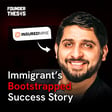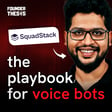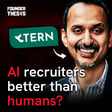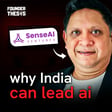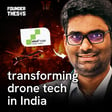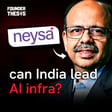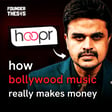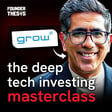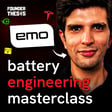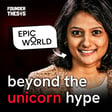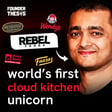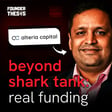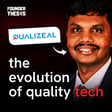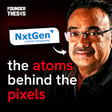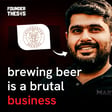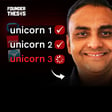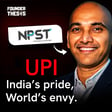
From Testing Pioneer to VC, Gireendra Kasmalkar on Building Ideas to Impacts and Pentathlon Ventures
How did Gireendra Kasmalkar build one of India’s earliest independent testing companies, exit to a global leader, and then reinvent himself as a B2B SaaS-focused VC from Pune? In this episode of the Founder Thesis Podcast, we uncover the playbook behind his 30-year entrepreneurial journey.
Gireendra Kasmalkar is the Founder of Ideas to Impacts and Managing Partner at Pentathlon Ventures. His story spans from starting VeriSoft, India’s pioneering testing company later acquired by SQS, to creating Ideas to Impacts, a disruptive IT services firm that builds tech delivery centers in tier-2 and tier-3 towns under the Smart Town model. He also co-founded Pentathlon Ventures, one of Pune’s first VC funds, dedicated to early-stage B2B SaaS startups. In this candid conversation with host Akshay Datt, Gireendra shares insights on building for adjacency, why B2B SaaS is India’s hidden strength, and how distributed work from hometowns will shape the future of Indian IT.
Key highlights:
- How Gireendra Kasmalkar built and exited VeriSoft to SQS
- The founding story of Ideas to Impacts and the Smart Town model
- Lessons from creating a Pune-based VC fund Pentathlon Ventures
- Why B2B SaaS is India’s strongest global play
- COVID’s role in accelerating the Work From Hometown model
- Founder insights on building, scaling, and investing with adjacency
Subscribe to the Founder Thesis Podcast
Follow us on LinkedIn for exclusive content
Visit founderthesis.com for more founder stories
00:00 - Gireendra Kasmalkar’s entrepreneurial beginnings
04:30 - Building VeriSoft into India’s testing leader
10:20 - Exit to SQS and lessons from acquisition
16:05 - The origin of Ideas to Impacts Smart Town model
22:40 - Work From Hometown and COVID’s impact
30:15 - Scaling tier-2 and tier-3 IT delivery centers
38:50 - Launching Pentathlon Ventures from Pune
46:30 - Why B2B SaaS is India’s next big wave
54:10 - How Pentathlon screens and funds early startups
01:01:40 - Macro trends shaping Indian VC and SaaS
#GireendraKasmalkar #IdeasToImpacts #PentathlonVentures #FounderThesis #SmartTownModel #WorkFromHometown #B2BSaaSIndia #PuneStartupEcosystem #IndianVC #IndianSaaS #EarlyStageVCIndia #ITservicesIndia #Tier2India #RemoteWorkIndia #IndianFounders #B2BstartupsIndia #StartupFundingIndia #FutureOfIndianIT #DistributedWorkModel #SaaSgrowthIndia

